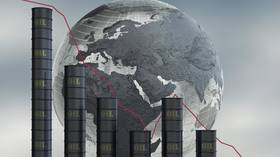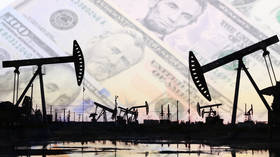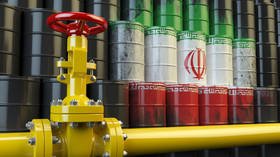Big Oil’s dwindling reserves are a major problem

The oil reserves of international oil companies have collapsed over the last 5 years, and now the stability of the entire oil market is under threat.
In the coming years, the power structure of global oil markets is set for a major shakeup if the reserve life of International Oil Companies (IOCs) continues to decline. The dwindling of investments, caused by a very tough economic environment and the growth of activist investing, has resulted in a major decline in new projects and the underdevelopment of existing or prospective opportunities. Citibank warned in a recent research note that IOCs, such as Shell, Exxon, and Chevron, are looking at a major decline of reserve/production life spans.
According to Citi, the overall average reserves in place have fallen by 25% since 2015, with less than 10 years of total annual production available. These issues appear to have been under-assessed by financial markets, with analysts unable to accept that the very future of IOCs is under threat. An oil company can only exist if it has reserves and is able to keep production at targeted levels for a long period of time. If reserves and production dwindle, it is not only the attractiveness of such an independent oil company that comes into question but its existence. In its research note, Citibank described falling IOC reserves as “an impending challenge” and the annual reports from the industry giants suggest that these once-great companies are now in trouble. According to Citibank, it is low oil prices that are the primary driver behind this growing problem.
“There is no circumventing this relationship between reserves and earnings, so we believe that analyzing reserve trends is an extremely important indicator of a company’s health,” said Citi.
As demand recovers and oil prices climb, there are plenty of potential financial windfalls in 2021 for these companies to take advantage of. The question remains, however, over whether or not the companies will invest in new production and reserves or will they use it to pay dividends. Some analysts have already claimed that the current reserve crisis is no real issue, as most IOCs are going through an energy-transition phase. However, to invest in the energy transition these companies need plenty of cash to cope with the planned multi-billion-dollar wind, solar, and hydrogen projects, while also keeping investors and shareholders happy. As stated by Citibank, “the latest words from an IOC board chairman, ‘Black pays for green’, refer to the 80% of the CFFO (cash flow from operations) generated from oil and gas activities, which is expected to be above 70% by 2030.” If reserves are not high enough to sustain “normal” oil and gas operations, the time frame for energy transition success then becomes a major issue too.
Also on rt.com Big Oil books one of worst years on recordCiti reported that it has two distinct groups of IOCs in the oil sector, with six of them having a reserve lifespan of around 10.5 years and three of them with a reserve lifespan of roughly eight years. The first group consists of Total, BP, Chevron, ENI, ConocoPhillips, and ExxonMobil. The second group consists of Repsol, Equinor, and Shell.
Assessments should also be made about the geopolitical factors forcing reserve ratios of IOCs down. By enforcing net-zero policies on independent oil and gas majors, an incremental shift in investment is underway. IOCs, due to their falling reserves and the need to de-risk their portfolios, are now unable to pursue new opportunities with the same vigor as they once would. Clean energy initiatives, ESG investment, and the Sustainable Development Goals are all having a direct negative impact on IOCs and their ability to maintain reserves and production.
Also on rt.com Robots threaten to replace hundreds of thousands of oil & gas jobs by 2030 – reportOne major impact of this development is that as IOCs are struggling to keep production reserves in place, National Oil Companies (NOCs) have managed to maintain their impressive reserves. Major producers such as Aramco, ADNOC, IOC, and NOC, are looking at reserve and production ratios that go beyond 25 years. If IOC production is culled or choked, the demand for oil from NOCs will increase substantially. Profit margins per barrel are also a major investment issue, as IOCs have been looking at the more challenging environments, such as deepwater, offshore, Arctic, or shale, while NOCs still have major conventional reserves in place. Margins of Aramco’s barrels vs Shell show a clear picture. Investing in or financing the future developments or production capabilities of NOCs will be much more attractive. Power is clearly shifting away from NOCs.
Global hydrocarbon supply provides security for non-hydrocarbon producing economies, but that system is now under threat. Energy transition risks are still being assessed, but the option of a global energy market that has shifted to rely heavily on NOCs for oil is unlikely to be an optimal solution. Energy and product stability has been supported by a mixed power structure in which IOCs and NOCs work together to maintain an equilibrium. Without reserves of more than 10 years, that stability is under threat.
This article was originally published on Oilprice.com














